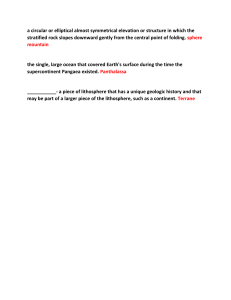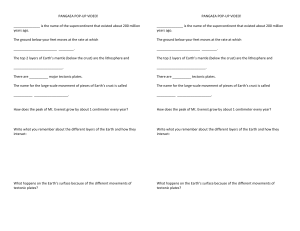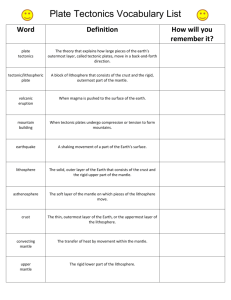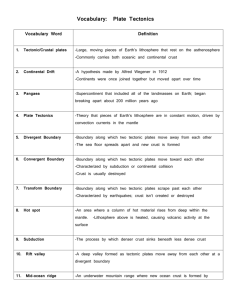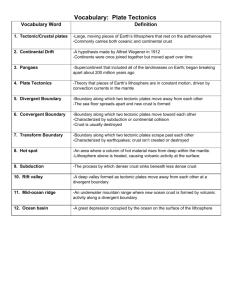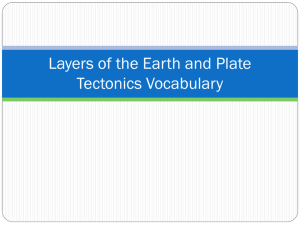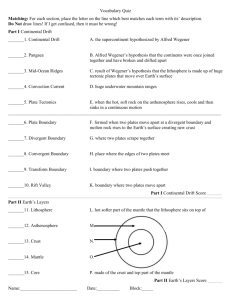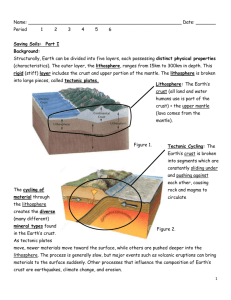Earth Space Vocabulary Chapter 10 Plate Tectonics The theory that
advertisement
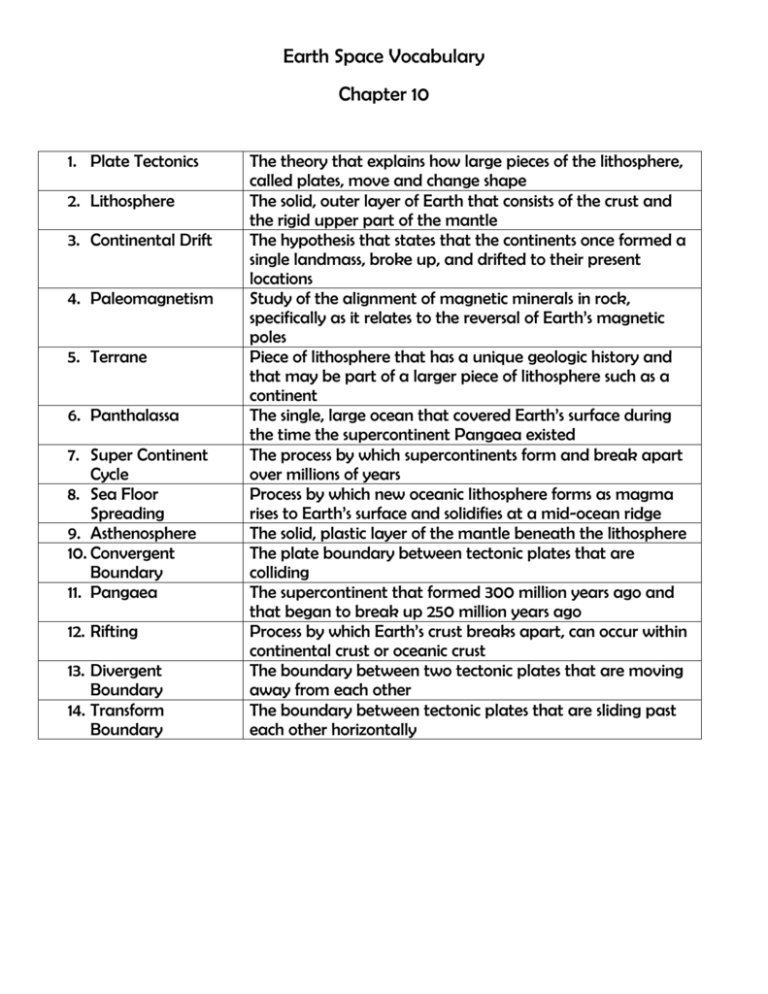
Earth Space Vocabulary Chapter 10 1. Plate Tectonics 2. Lithosphere 3. Continental Drift 4. Paleomagnetism 5. Terrane 6. Panthalassa 7. Super Continent Cycle 8. Sea Floor Spreading 9. Asthenosphere 10. Convergent Boundary 11. Pangaea 12. Rifting 13. Divergent Boundary 14. Transform Boundary The theory that explains how large pieces of the lithosphere, called plates, move and change shape The solid, outer layer of Earth that consists of the crust and the rigid upper part of the mantle The hypothesis that states that the continents once formed a single landmass, broke up, and drifted to their present locations Study of the alignment of magnetic minerals in rock, specifically as it relates to the reversal of Earth’s magnetic poles Piece of lithosphere that has a unique geologic history and that may be part of a larger piece of lithosphere such as a continent The single, large ocean that covered Earth’s surface during the time the supercontinent Pangaea existed The process by which supercontinents form and break apart over millions of years Process by which new oceanic lithosphere forms as magma rises to Earth’s surface and solidifies at a mid-ocean ridge The solid, plastic layer of the mantle beneath the lithosphere The plate boundary between tectonic plates that are colliding The supercontinent that formed 300 million years ago and that began to break up 250 million years ago Process by which Earth’s crust breaks apart, can occur within continental crust or oceanic crust The boundary between two tectonic plates that are moving away from each other The boundary between tectonic plates that are sliding past each other horizontally
